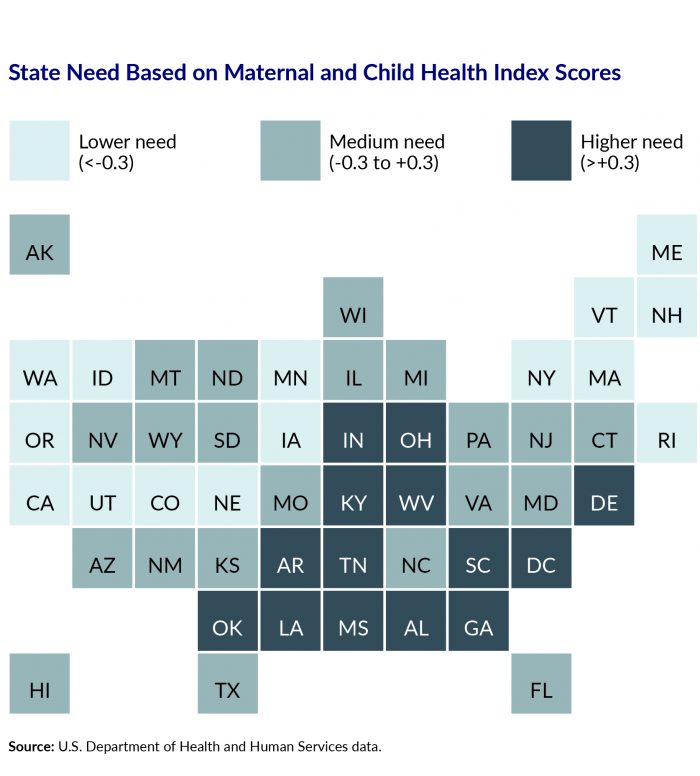
This blog post complements a previous post on using demographic and economic data to expand home visiting’s reach.
U.S. officials attending the 71st World Health Assembly made headlines this summer when they attempted to thwart a resolution encouraging breastfeeding. Decades of research suggest that breastfeeding is the best source of nutrition for infants. Supportive policy measures like the one ultimately introduced at the Assembly underscore breastfeeding’s importance—and the importance of maternal and child health (MCH) indicators more generally—in assessing child and family well-being.
Within the field of home visiting, breastfeeding rates can be used to pinpoint areas where large numbers of families could benefit from additional supports. Our latest brief, Mapping the Need for Home Visiting Across and Within States, looks at a number of MCH indicators that align with common home visiting goals, including healthy birth outcomes and long-term child health development. We categorize states as having relatively lower, medium, or higher need for home visiting services based on a composite index of six MCH indicators:
- Rates of delayed prenatal care
- Tobacco use during pregnancy
- Preterm births
- Breastfeeding
- Infant mortality
- Emergency room visits for young children

Decision makers can also look to MCH indicators beyond those included in the brief to assess need for home visiting services and inform plans to allocate resources. The Data Supplement to the 2017 Home Visiting Yearbook, for example, includes state measures of child abuse and fourth grade reading proficiency.
Other indicators look at longer-term measures of educational, mental, and environmental well-being:
- Postpartum depression
- Opioid overdose deaths
- Incidence of domestic violence
- High school dropout rates
- Developmental delays
- Low birthweight births
Such data are not always available or up to date, especially at city and county levels. Mapping the Need for Home Visiting Across and Within States provides further guidance on mapping need at the substate levels.
MCH indicators are valuable tools for painting a more complete picture of home visiting need and child and family well-being. When used correctly, they can inform policy makers, administrators, and other stakeholders tasked with allocating home visiting resources and delivering services.